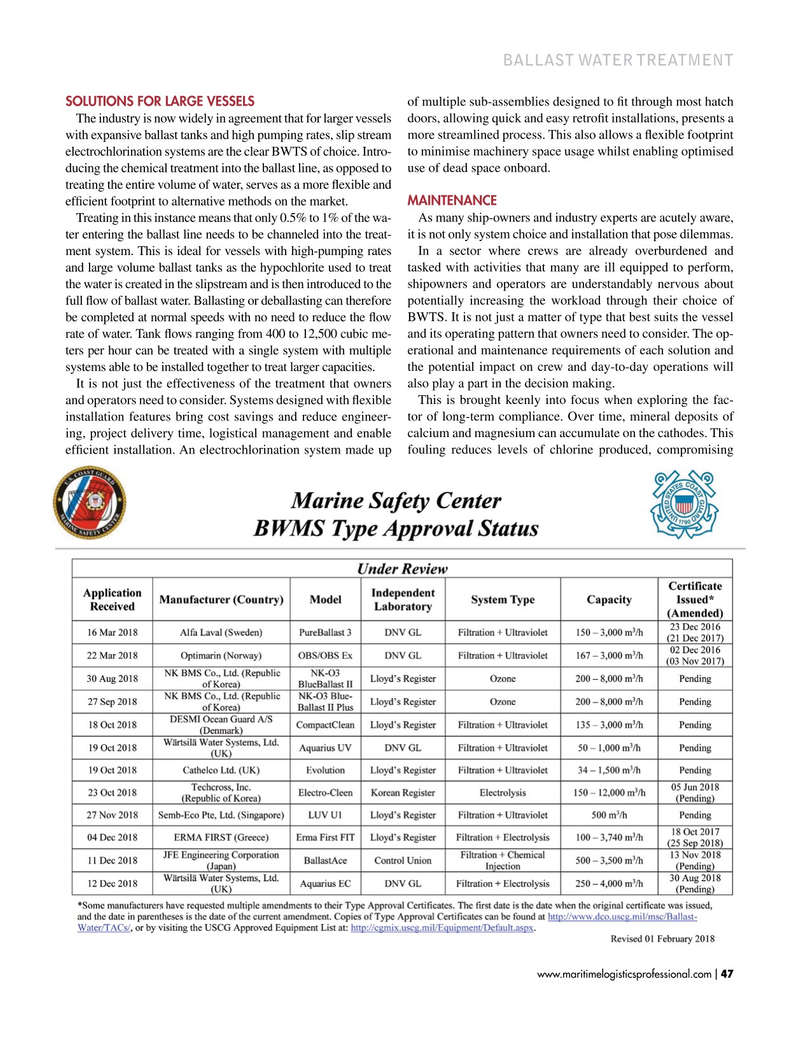
Page 47: of Maritime Logistics Professional Magazine (Jan/Feb 2019)
Cruise Ports Annual
Read this page in Pdf, Flash or Html5 edition of Jan/Feb 2019 Maritime Logistics Professional Magazine
BALLAST WATER TREATMENT
SoluTionS foR lARGE VESSElS of multiple sub-assemblies designed to ft through most hatch
The industry is now widely in agreement that for larger vessels doors, allowing quick and easy retroft installations, presents a with expansive ballast tanks and high pumping rates, slip stream more streamlined process. This also allows a fexible footprint electrochlorination systems are the clear BWTS of choice. Intro- to minimise machinery space usage whilst enabling optimised ducing the chemical treatment into the ballast line, as opposed to use of dead space onboard.
treating the entire volume of water, serves as a more fexible and effcient footprint to alternative methods on the market. MAinTEnAnCE
Treating in this instance means that only 0.5% to 1% of the wa- As many ship-owners and industry experts are acutely aware, ter entering the ballast line needs to be channeled into the treat- it is not only system choice and installation that pose dilemmas.
ment system. This is ideal for vessels with high-pumping rates In a sector where crews are already overburdened and and large volume ballast tanks as the hypochlorite used to treat tasked with activities that many are ill equipped to perform, the water is created in the slipstream and is then introduced to the shipowners and operators are understandably nervous about full fow of ballast water. Ballasting or deballasting can therefore potentially increasing the workload through their choice of be completed at normal speeds with no need to reduce the fow BWTS. It is not just a matter of type that best suits the vessel rate of water. Tank fows ranging from 400 to 12,500 cubic me- and its operating pattern that owners need to consider. The op- ters per hour can be treated with a single system with multiple erational and maintenance requirements of each solution and systems able to be installed together to treat larger capacities. the potential impact on crew and day-to-day operations will
It is not just the effectiveness of the treatment that owners also play a part in the decision making.
and operators need to consider. Systems designed with fexible This is brought keenly into focus when exploring the fac- installation features bring cost savings and reduce engineer- tor of long-term compliance. Over time, mineral deposits of ing, project delivery time, logistical management and enable calcium and magnesium can accumulate on the cathodes. This effcient installation. An electrochlorination system made up fouling reduces levels of chlorine produced, compromising www.maritimelogisticsprofessional.com 47
I

 46
46

 48
48
